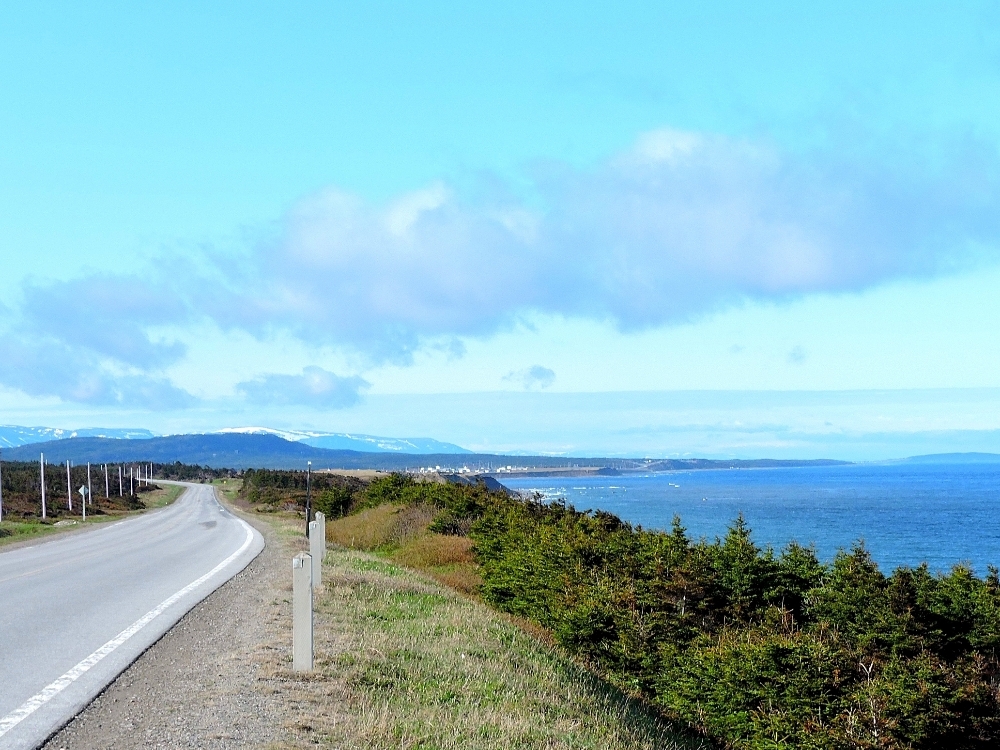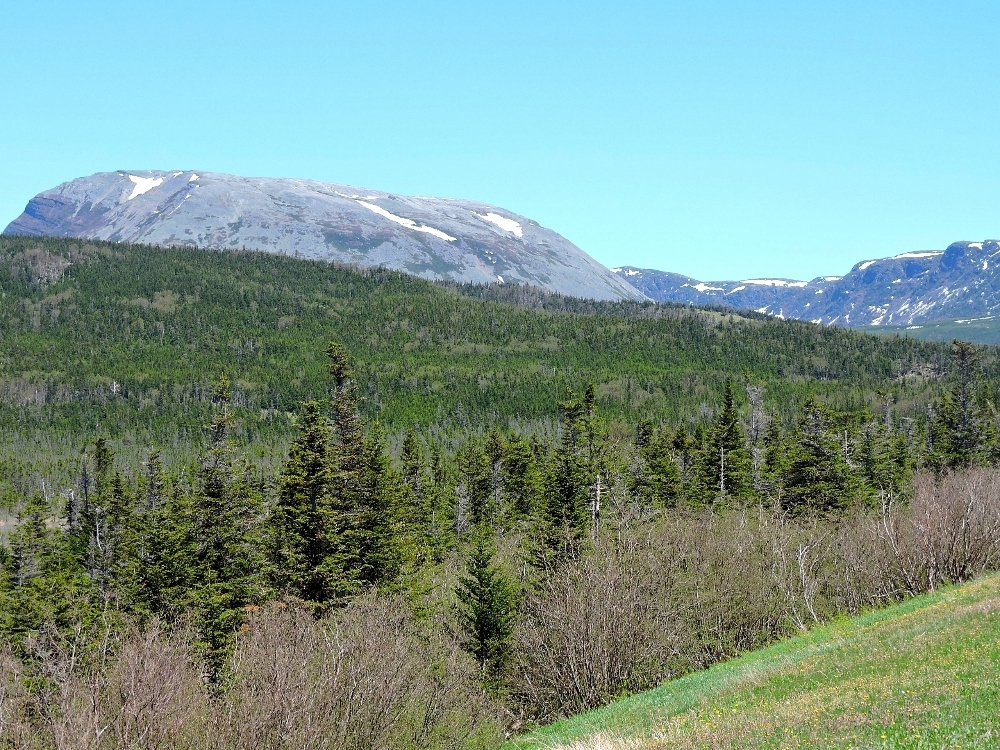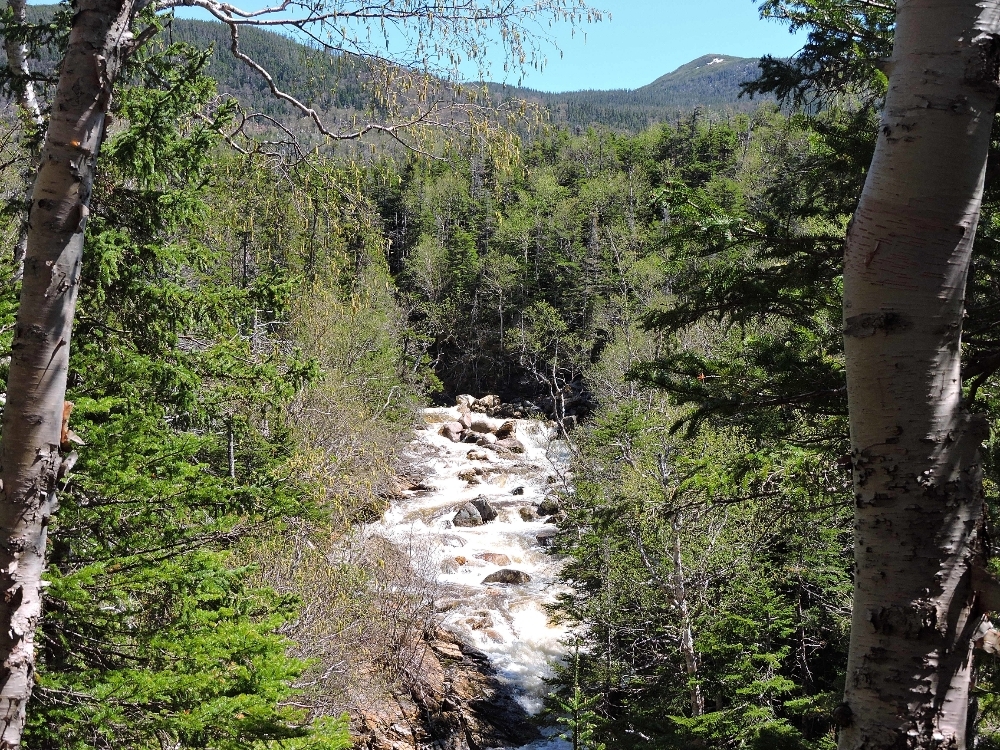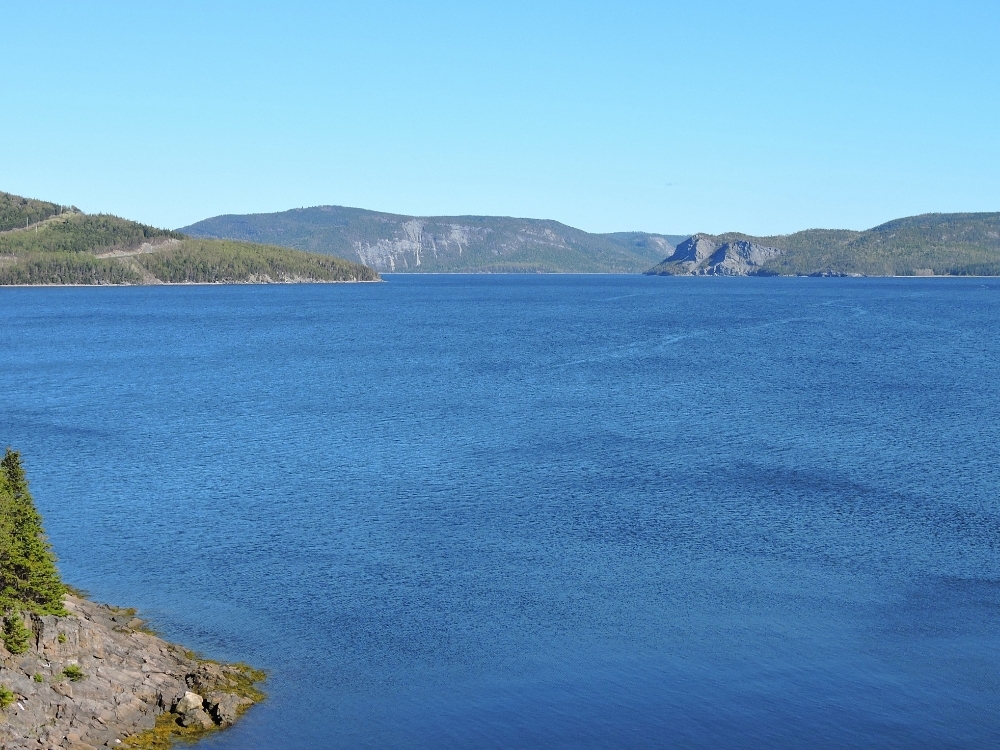Many national parks around the World are also World Heritage Sites, and they are always enjoyable places to visit. One example along the Tour route is Gros Morne National Park, located on the central west coast of Newfoundland. The park is a mountainous region, which, like the Appalachians, represents an eroded remnant of still larger mountains formed when North America collided with Asia to form the northern part of the supercontinent, Pangea. Much later, glacial periods further carved the landscape, leaving behind attractive fjords and lakes.
I expected my visit to be rained out, like many of the preceding days bad been. However, while bad weather did cause me to arrive one day later then I had hoped, using up the one buffer day I had in my near-term schedule, the skies during my visit were actually quite pleasant. Arriving from the north, one first passes many kilometers of nice coastal scenery, where the mountains meet the sea in an impressive manner.

Many visitors to the Park enjoy the guided boat trips through the fjords that are on offer, but I passed on that opportunity, since I had been expecting colder weather, and I was growing tired of that. Instead, I spent most of the day on a relaxing walk on the Gros Morne Mountain trail, looking for birds along the way. In other months of the year it would have been possible to walk all the way to the top of the mountain, where one might see a Rock Ptarmigan, but when I was there that option was unavailable, in order to provide protection for breeding wildlife. That was fine with me, since I wouldn’t have had enough time to cover the entire trail anyway, and I should have other chances to see ptarmigans in the coming weeks.



One aspect of Canadian national parks that is different from their counterparts in other countries is that their centers for lodging and services are actually small towns located at the edges, or sometimes carved out of the interiors, of the parks themselves. This means that there may be quite a distance between the place one stays and the best trailheads, or other points of interest. In my case, this caused me to do a small amount of cycling on a day that I would have preferred to stay off the bike completely.
While the scenery in the Park is undeniably beautiful and impressive, there are many places in the World possessing similarly esthetic terrain that aren’t World Heritage listed. It is the combination of visual appeal and the geological history of the Park, which provides a valuable demonstration of the processes of Plate Techtonics, that gives this Park an edge, and led to its inclusion on the List. I would have enjoyed having more time to learn more about that latter aspect, but such things are not always possible during a long tour. It was a worthwhile place to stop, in any case.